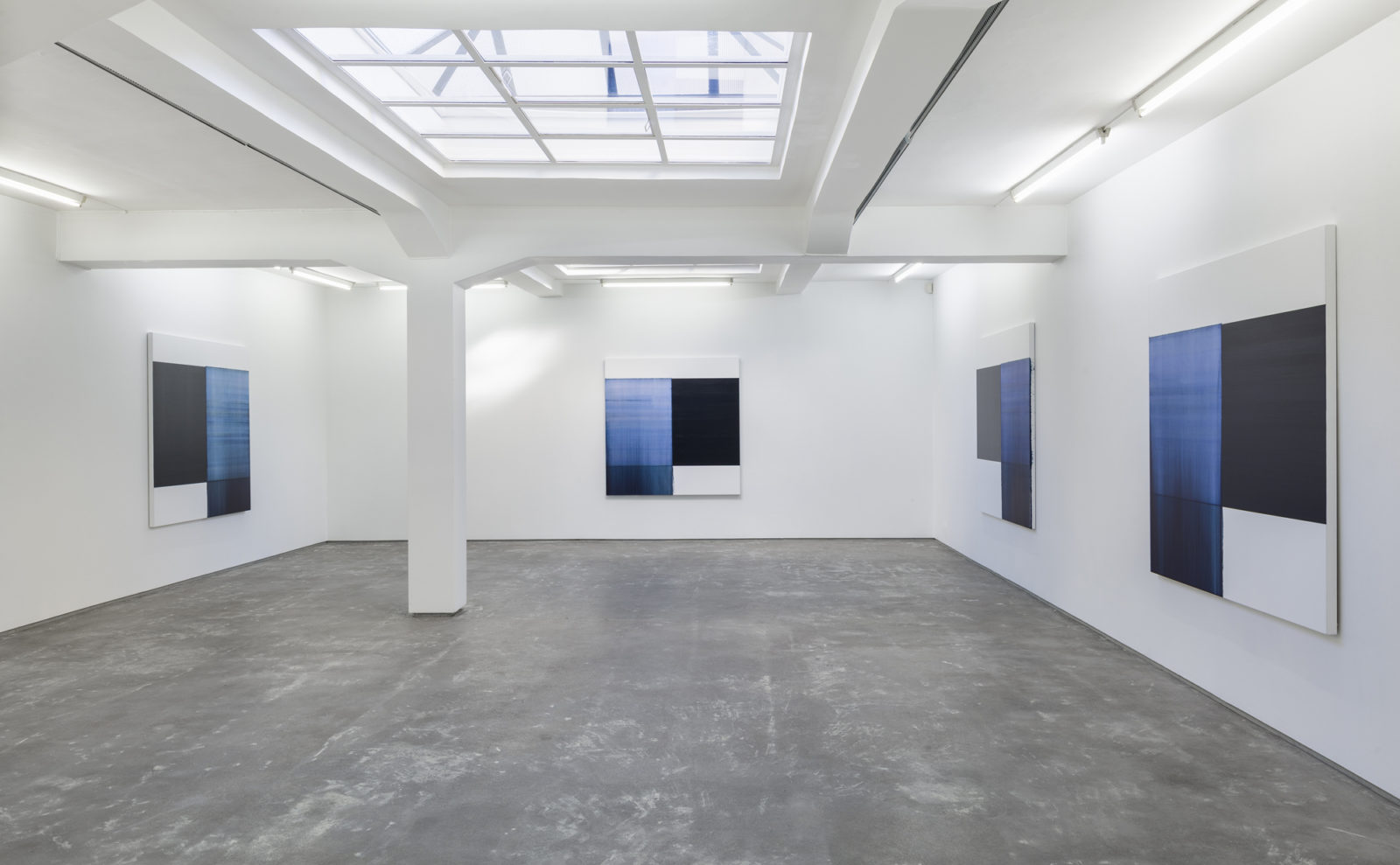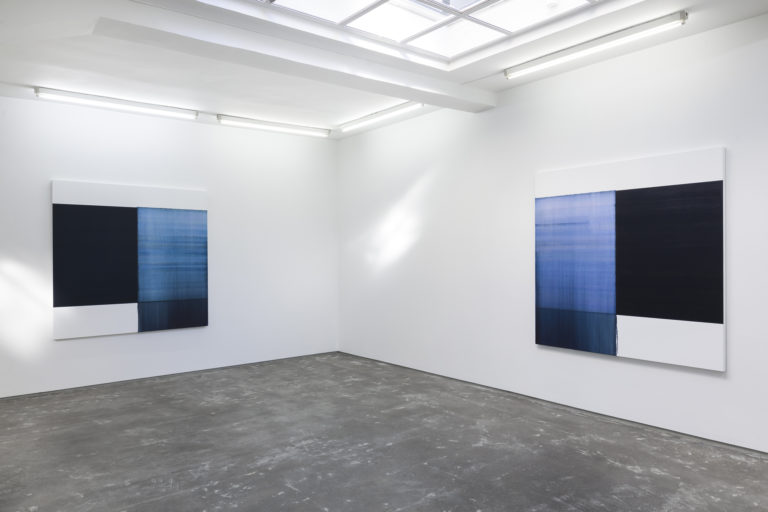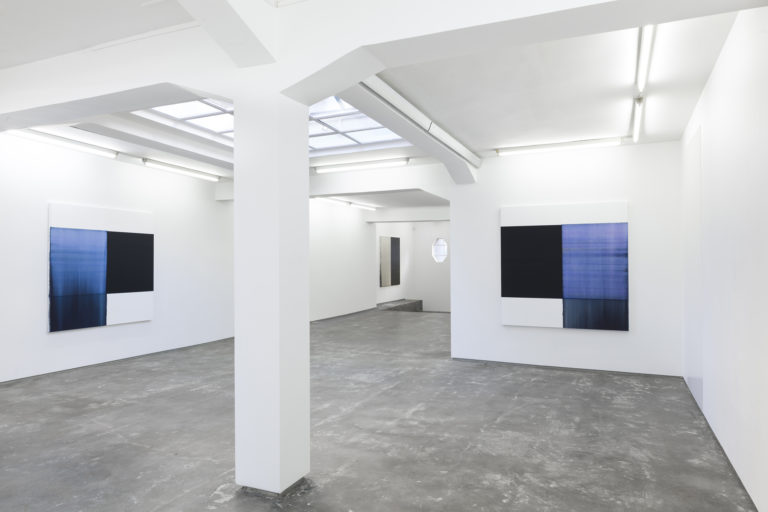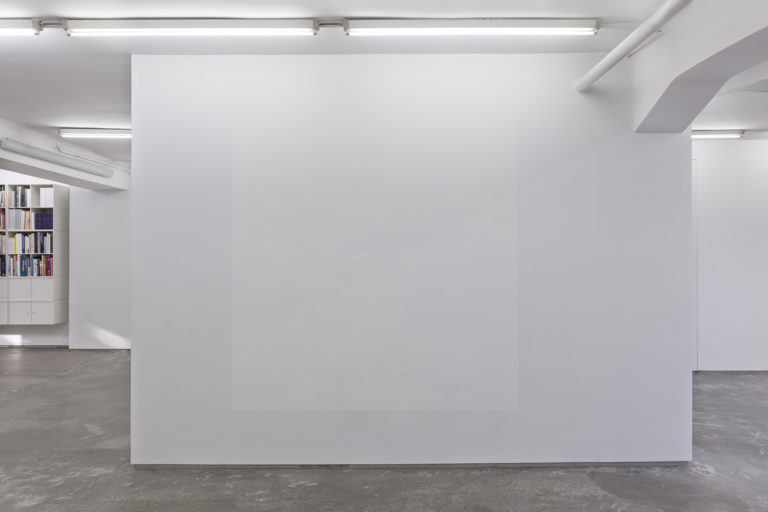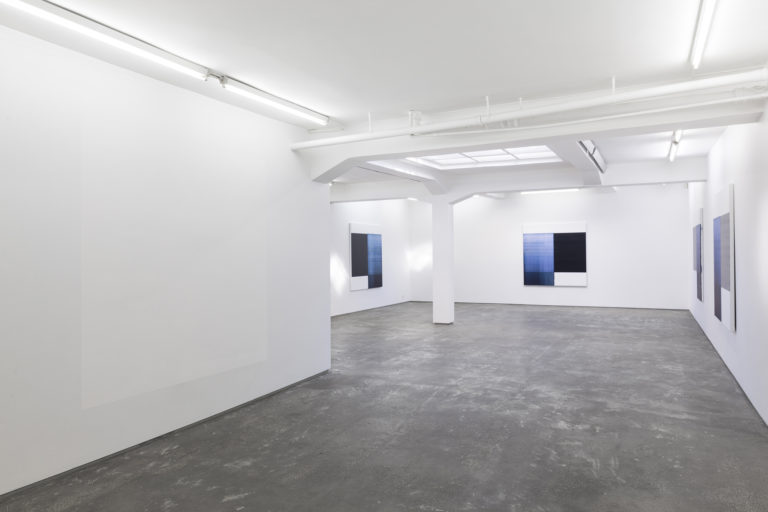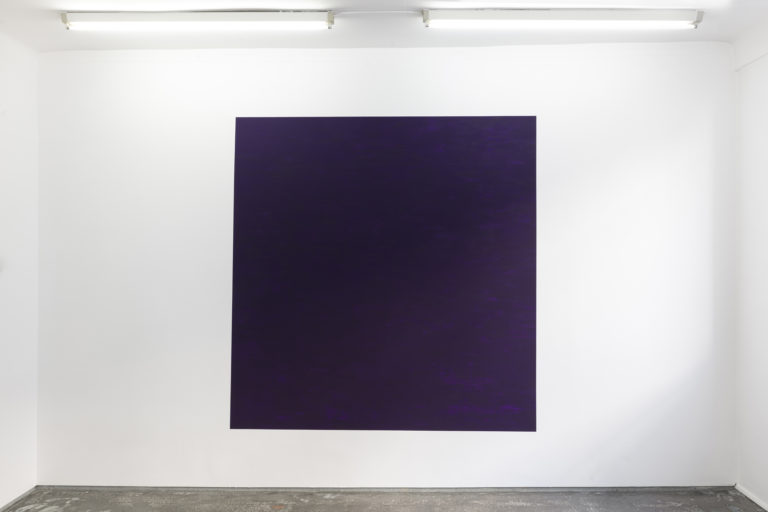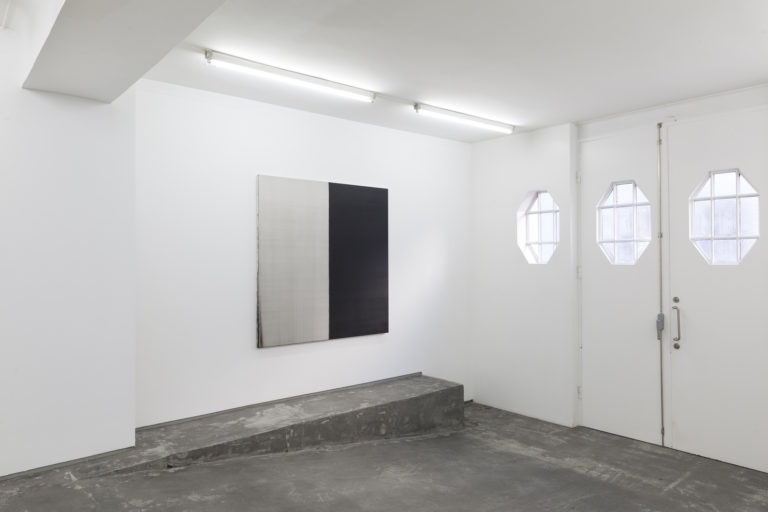OSL contemporary is proud to present its second exhibition with the Scottish painter Callum Innes. The exhibition comprises five new works from the series Exposed Paintings, two new works from the Untitled Lamp Black Paintings series, as well as a site-specific wall painting presented in the gallery’s office. The exhibition opens October 11 and will be on view until November 10, 2018.
Through a special technique of addition and subtraction, Callum Innes applies and removes paint on canvas in a process he compares to history-making. Compositions are gradually built by applying paint in numerous colours in layers on meticulously gessoed canvas. The colours are painted over with a final layer of black. Innes proceeds by using turpentine to remove layers of paint from areas in the composition. The solvent thins and dissolves the paint, revealing the luminous colours that lie underneath the black surface. The process is repeated several times, alternating between application and removal. Left is the exposition of the works’ making, the history behind each layer of paint. Marks from the painting process are visible along the edges of the canvases, and the surface quality differs where the various sections of the paintings interact, emphasising the works’ objecthood and insistent materiality.
In the ongoing series Exposed Paintings, the canvas is divided geometrically into several unequal areas: some are painted in a single colour, in others the paint has been applied and then removed, and in some the canvas remains unpainted. Before the paint begins to dry, Innes removes part of it with turpentine. Created vertically on the wall, gravity works on the paint, causing a natural downward pull on the medium. Residue of the paint is left on the canvas’ surface directly below the areas where the colour is exposed, leaving a subtle, yet, significant trace of the process.
Although the compositional basis of the paintings are horizontal and vertical lines, there are slight degrees of variance where the geometrical areas interact. No single line is completely straight and the subtle unevennesses distinguishes the paintings from the purely minimalist; these works instead radiate their handmade qualities, the out of kilter nuances are simple touches that make the works active. There are traces of the artist’s hand in the powder-like, fine borders between the colours, and the lines’ softness gives the impression of texture. Several sections carry a patina of softness and warmth, comparable to that of yellowed paper or candlelight. The luminous, yet subdued, exposed colours appeal to the tactile sense: the hues of violet, blue, red and grey seen against black and white sections, are not only contrasting in colour but seem different to the touch, suggesting that tactile perception can be something more than the point of contact between the skin and an object.
The quiet appearance of Innes’ works resonates: the exposed brushstrokes, the fragile lines and the ubiquitous possibility of failure during the production process, leaves behind a human presence and a fragility that invites the viewer to close, attentive looking. Subtle details that captivate the viewer is also part of the technique of Innes’ wall paintings. Monochromatic and site-specific, these works are rendered in intense colours that have an immediate effect on our vision. The artist prepares the wall with gesso and paints colour directly on the wall, within a rectangle. Each rectangle has a very gentle curve on one side, forming a delicately distorted geometric shape that activates the wall and disorients the viewer by making it unclear whether the coloured space is behind or outside the wall. Also here, the play between addition and subtraction is at the core of the process, evincing the near sculptural approach to painting in Innes’ sophisticated body of work.
Callum Innes (b. 1962) is among the most significant abstract painters of his generation. His work can be found in major public collections worldwide, including that of Albright-Knox Art Gallery, Buffalo; Art Gallery of Ontario, Toronto; Centre George Pompidou, Paris; Deutsche Bank Art Collection, Frankfurt; Kunstmuseum Bern; Museum of Modern Art, Forth Worth; The National Gallery of Australia, Canberra; National Galleries of Scotland, Edinburgh; The San Francisco Museum of Modern Art; Solomon R. Guggenheim Museum, New York; and Tate Gallery, London. Recent critically acclaimed museum exhibitions include In Position at Château La Coste in Aix-en-Provence (2018); I’ll Close My Eyes at De Pont Museum in Tilburg (2016); Callum Innes at the Whitworth Art Gallery in Manchester (2013); Callum Innes: Recent Work at the National Galleries of Scotland in Edinburgh (2010); and From Memory, which travelled throughout Europe and Australia (2008-09). Innes lives and works in Edinburgh and Oslo.
